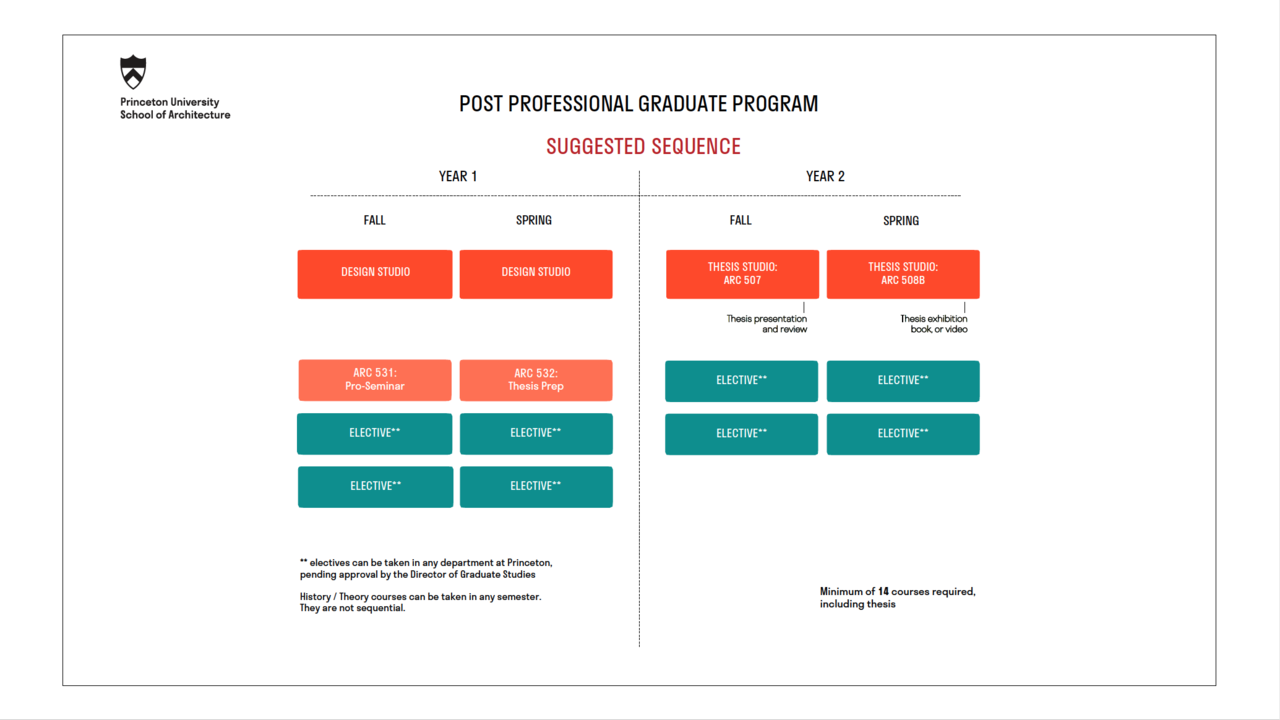The Post-Professional Graduate Program is available to those who hold the degree of Bachelor of Architecture (B.Arch.) or its equivalent from an international institution. These are students who have successfully completed a professional program in architecture and have fulfilled the educational requirements for professional licensing in the state or country in which the degree was granted. Students typically complete this program in two years. This degree is not accredited by the NAAB.
POST-PROFESSIONAL GRADUATE PROGRAM
Students complete the Post-Professional Graduate Program in two years and take a minimum of 14 courses. This degree is not accredited by the NAAB.
See Program Requirements Worksheet
PREREQUISITES (not required for admission but should be completed before matriculation)
One year of college level math
One year of college level physics
One year of architecture and art history course work
PROGRAM REQUIREMENTS
Design Studios and Seminars
Two studios (ARC 503, 504, 505A-C and/or 506A-C)
ARC 507, 508 (year-long thesis)
Proseminar
ARC 531
Thesis Prep
ARC 532
Electives
Eight (8) courses
THESIS
The Post-Professional Graduate Program culminates in a thesis in which design itself is considered a form of research. In lieu of a studio presentation, students exhibit their work at a gallery in New York City during their final semester. Utilizing Princeton’s unique interdisciplinary potential as a research university, students are free to seek advisors from within and outside the faculty of architecture. This tradition draws on architecture’s history that has, since the Renaissance, incorporated a vast spectrum of disciplines from the humanities, arts, and sciences.
EXEMPTIONS
Depending on the student’s prior education or experience, exemption from certain courses may be obtained, on an individual basis, by application to the DGS. Such exemptions, when granted, are recorded in the student’s file. Exemptions from particular courses do not reduce the number of courses required in each of the designated areas of study but allow for more flexibility within the area of distribution.

